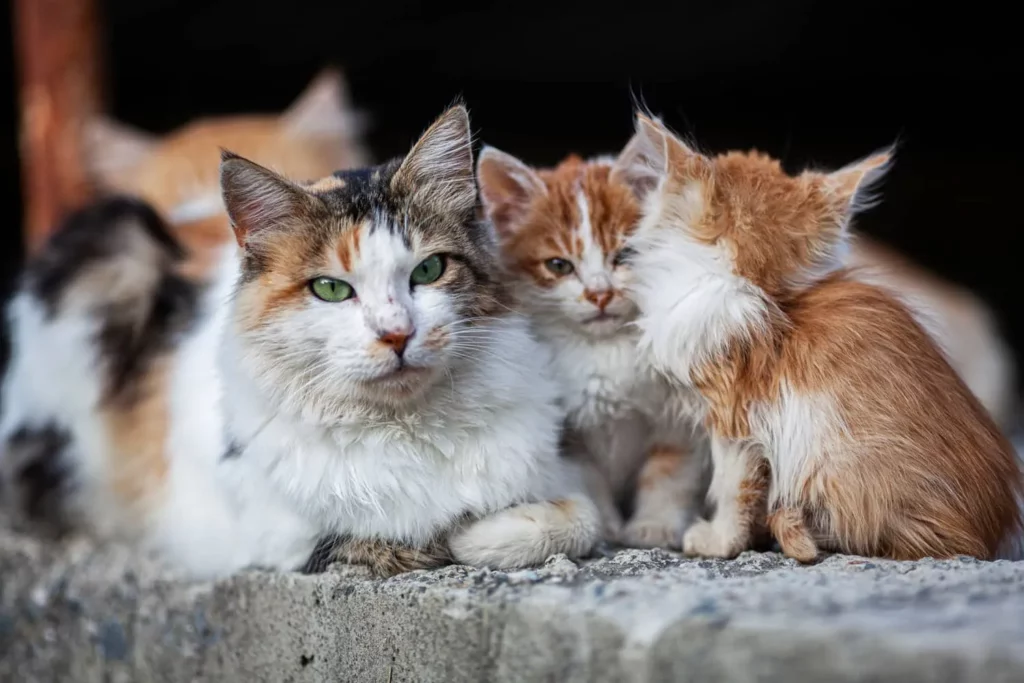Are you wondering when is it too late to tame a feral cat? Do you want to know the criteria for taming a feral cat? Keep reading to know when it is too late to tame a feral cat.
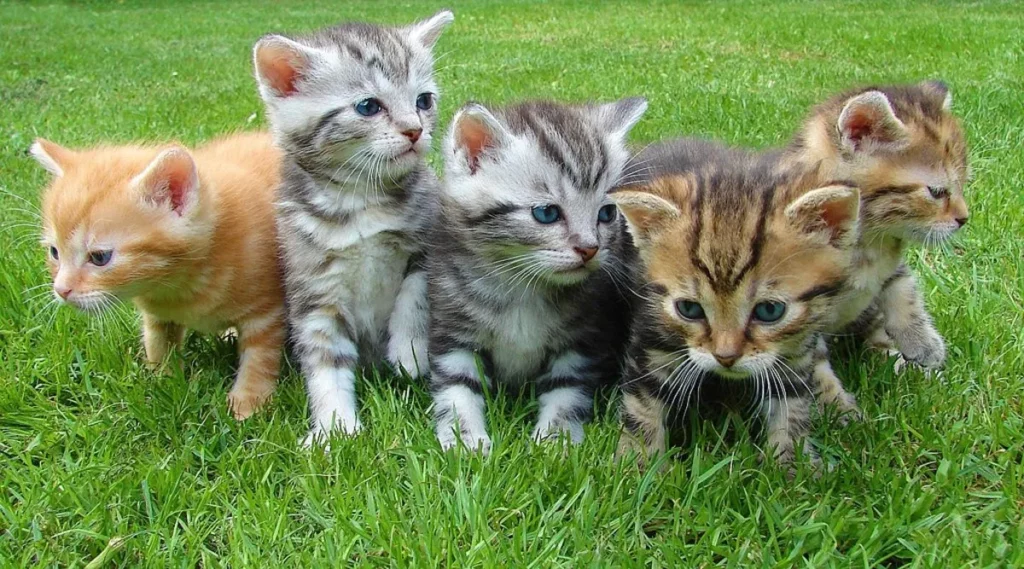
At our core, we are devoted to understanding and addressing the complexities of feral cat domestication.
We recognize the challenges and sensitivities associated with this subject, especially surrounding the question, “When is it too late to tame a feral cat”? Feral cats are often misunderstood animals.
Unlike stray cats, feral cats have had little to no contact or positive socialization with humans.
Their behaviors are deeply ingrained from living independently, fending for themselves without human interaction.
Furthermore, feral cats typically exhibit skittish behavior and are hesitant, if not outright fearful, of humans.
As you keep on reading, you will get to know when it is too late to tame a feral cat.
When is It Too Late to Tame a Feral Cat?
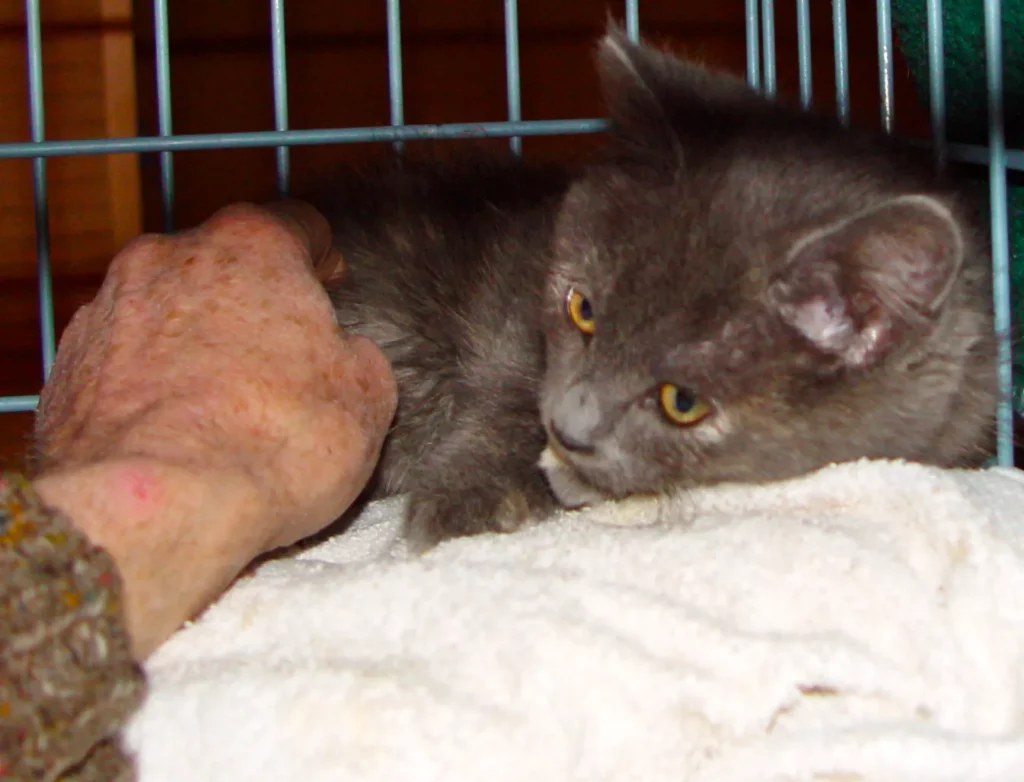
When your feral cat is above 8 to 12 weeks, it is too late to tame the cat.
Furthermore, younger feral kittens, especially those under 8-12 weeks old, have a higher likelihood of successfully adapting to human interaction and becoming domesticated.
In addition, adult feral cats might take longer to trust humans and might never fully adapt to domestic life.
However, with patience, persistence, and the right approach, many feral cats can still learn to tolerate human presence, though they might not become as affectionate or trusting as cats socialized at a younger age.
Factors Affecting Domesticating a Feral Cat
The potential for domesticating a feral cat depends on various factors, including its age, background, and experiences.
As feral cats age, they become more set in their ways, making socialization and domestication a more challenging prospect.
However, while the general belief is that it’s harder to tame older feral cats, it’s not necessarily impossible.
Early Socialization
Early socialization is pivotal for domesticating feral cats.
Kittens have a sensitive period in their development, between 2 to 7 weeks, where positive human interaction can significantly influence their behavior towards humans.
If a feral kitten is exposed to gentle handling, proper care, and positive human contact during this phase, the chances of successful domestication increase considerably.
Challenges in Taming Adult Feral Cats
While the task becomes more challenging with older feral cats, it’s not entirely implausible. Patience, consistency, and a deep understanding of cat behavior are vital.
In addition, the process demands a slow, gentle approach, allowing the cat to acclimate at its own pace without overwhelming it with human contact.
Signs of Progress in Feral Cat Socialization
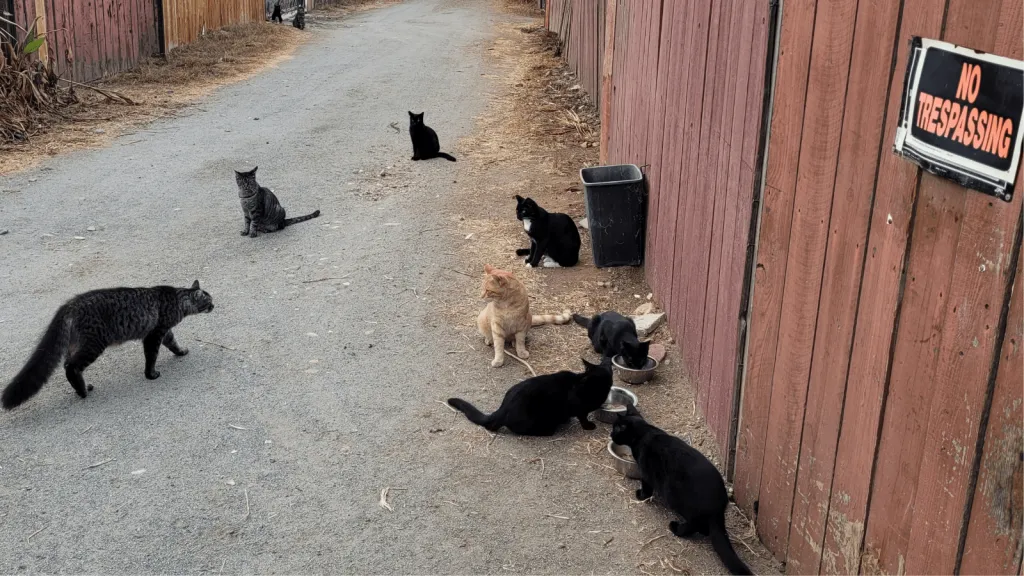
Here are the signs of progress in feral cat socialization:
1. Cat Display of Curiosity or Engage in Play
The progress in socializing feral cats is often slow but rewarding. Cats may display signs of progress by allowing proximity, showing curiosity, or engaging in play. Over time, trust can be built, leading to cautious interactions.
2. Cat Displaying Signs of Dependence and Interaction
Establishing a consistent routine, providing food and shelter, and gaining the cat’s trust through non-threatening actions are integral. Gradually, the cat may show signs of dependence and seek interaction.
How to Tame a Feral Kitten
Taming a feral kitten involves patience, gentleness, and a gradual approach to help them become comfortable with human interaction. Here are steps you can take to tame a feral kitten:
1. Create a Safe Space
Set up a confined space, like a small room or a large crate, with hiding spots, a litter box, food, and water. This will help the feral kitten to feel secure.
2. Create Limit Contact
Initially, limit direct contact and simply spend time in the same room, talking softly or reading aloud to get the kitten used to your presence.
3. Use Food to Build Trust
Place food near you and gradually move it closer to encourage the kitten to associate your presence with something positive.
4. Earn Trust Gradually
Slowly introduce gentle movements by offering treats or playing with toys using a wand or string. Allow the kitten to approach and engage at their own pace.
5. Gradual Touch
When the kitten seems more comfortable, try petting them gently. Start with short, gentle strokes and observe their reaction. Stop if they seem uncomfortable or scared.
6. Apply Consistency
Be consistent in your approach. Spend regular, short periods of time with the kitten to build familiarity and trust.
7. Use Positive Reinforcement
Reward the kitten with treats, gentle words, or play when they respond positively to your interaction.
8. Avoid Forcing Interactions
Never force handling or petting if the kitten is showing signs of fear or stress. This can cause setbacks in the taming process.
9. Take the Cat For Vaccination and Health Check
It’s important to take the kitten to the vet for a health check-up and vaccinations.
This ensures they’re healthy and helps you understand their needs better. If possible, introduce the kitten to other well-socialized cats. They might learn social cues from them.
If progress is slow or the kitten seems excessively fearful or aggressive, consider seeking advice from an experienced animal behaviorist or a veterinarian for further guidance.
Can a 6-Month-Old Feral Cat Be Domesticated?
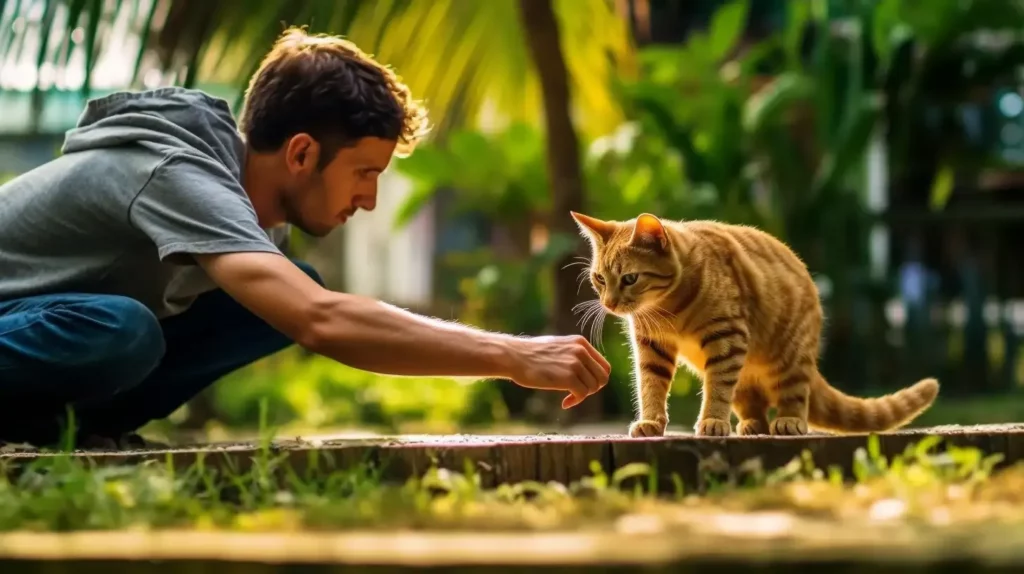
Yes, a 6-month-old feral cat can still be domesticated, but the process might be more challenging compared to taming younger kittens.
At six months, a cat is still relatively young, but they might have had more exposure to feral behaviors and less socialization with humans.
However, with patience, dedication, and the right approach, many 6-month-old feral cats can still become accustomed to human interaction and potentially adapt to domesticated life.
Can a 4-month-old Feral Kitten Be Tamed?
Yes, a 4-month-old feral kitten can absolutely be tamed.
At this age, kittens are still relatively young and in a critical socialization period, making them more adaptable to human interaction compared to older cats.
While the taming process might be easier with younger kittens, it’s still very possible to socialize and tame a 4-month-old feral kitten with patience, consistency, and the right approach.
Here are steps you can take to tame a 4-month-old feral kitten:
1. Provide a Safe Environment
Set up a confined space with hiding spots, food, water, and a litter box to help the kitten feel safe and secure.
2. Gradual Introduction
Spend time in the same room as the kitten without trying to make direct contact initially. Talk softly or engage in quiet activities, allowing the kitten to get used to your presence.
3. Use Food to Build Trust
Place food near you and gradually move it closer to encourage the kitten to associate your presence with something positive.
4. Earn Trust Slowly
Introduce gentle movements by offering treats or playing with toys to encourage the kitten to approach and interact.
5. Gentle Touch
Start with short, gentle strokes and observe the kitten’s response. You can stop if they show signs of fear or discomfort.
6. Be Consistent With Your Interaction
Be consistent in your interactions. Regular, short periods of positive interaction help build trust.
7. Positive Reinforcement
Reward the kitten with treats, gentle words, or play when they respond positively to your interaction.
In conclusion, while early socialization provides the best chance for successful domestication, patient and persistent efforts with older feral cats can yield positive results.
Related Searches:
